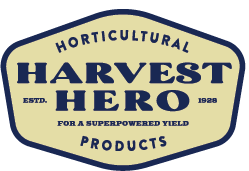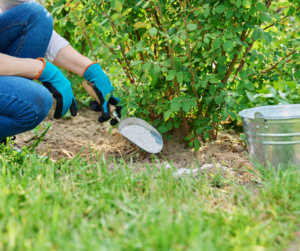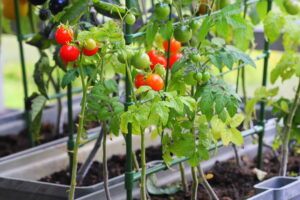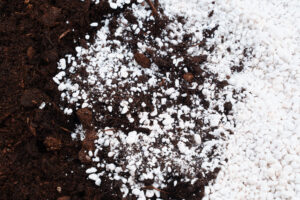Container Gardening: Maximizing Space with Pots & Planters
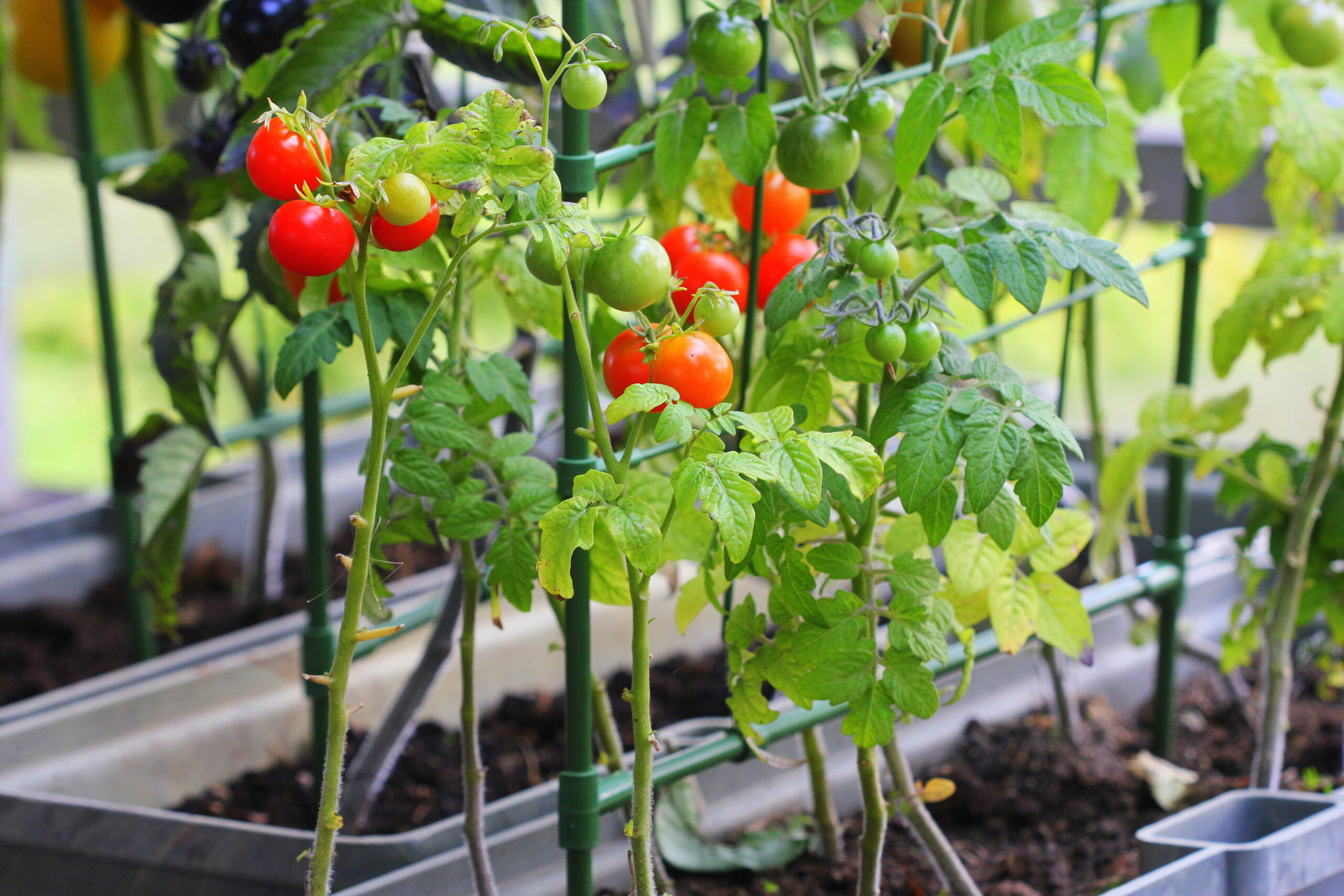
Whether you have a small garden space, love colorful pots, or just want a little more control over your plants, growing in a container is an excellent option. Here’s everything you need to know about how to add a bountiful container garden to your yard or patio.
What is a Container Garden?
Like the name suggests, a container garden is a collection of plants grown in pots, window boxes, buckets, or any container you can find. As long as the vessel can hold soil and has drainage holes, it can be added to your container garden.
Containers come in a variety of shapes, colors, sizes, and designs. Hanging baskets make it easy to harvest vine fruits like cherry tomatoes and strawberries. Window boxes give you easy access to herbs and other flowers. You can repurpose buckets, tubs, and boxes into container gardens, but keep the following tips in mind:
- The larger the container, the more drainage holes you need and the heavier the garden will be—especially once it’s full of soil.
- If you’re looking for mobility, a smaller container would be better.
- Smaller containers tend to dry quicker, so these will require more attention to moisture levels.
- A dark color container absorbs more sunlight, drying out the soil faster and may end up burning the roots.
- Most plants need at least one foot of soil to grow.
Here are some of the most popular potting materials.
- Plastic. This is one the cheapest options, mostly because they come included with the potted plants you buy from a nursery. If you already have a collection saved in your shed or greenhouse, you’re well on your way to starting a container garden. Plastic is lightweight, holds moisture well, and is easy to clean and reuse. Make sure to grow any edible plant in food-grade plastic so that chemicals won’t leach into the soil.
- Ceramic. Terra-cotta pots tend to be more decorative, and heavier, than plastic. Glazed designs retain more moisture than unglazed. Since clay is porous, this allows air and water to flow through it, so the soil doesn’t get too wet. However, some ceramic pots are more susceptible to cracking in cold weather. Even ones that claim to be frost-proof can crack under the pressure of the soil freezing and thawing. It’s better to store these pots in a sheltered area over the winter.
- Fabric. Another lightweight, breathable, and reusable option. Some designs feature handles that make them easier to move. The material is prone to tears and the soil tends to dry out quicker, so more watering is needed.
Since the garden is made up of a collection of containers, it can be situated anywhere you have enough space, such as a patio, balcony, terrace, or corner of your yard. Remember, it’s still important to place the container in an area where the plant will thrive. This means you should still consider factors like sun exposure, watering, and weather. The great thing about containers is if your plant isn’t thriving in a specific spot, you can move it without replanting. You can also easily bring the plant inside when the weather turns too hot or cold.
The Benefits of Container Gardening
In addition to maximizing your available garden space and being able to move pots around, there are many other benefits to container gardening.
- Easy access. Place your plants close to your house so you’re more likely to take care of them and harvest when needed. You can also place them at an accessible height.
- Tailor the ideal soil and growing medium with the right amount of nutrients for the specific plant you’re trying to grow.
- Little to no weeds.
- Better control of pests.
- Stagger plants to avoid being shadowed by other crops.
Of course, containers have their downfalls too. Just as not all plants will survive in the same type of environment, not all plants will thrive in a pot.
What Grows Best in a Container?
Some gardeners think you need a lot of space to grow plants. But the truth is many vegetables, herbs, fruits, and flowers can survive in containers. Some varieties do better than others. In general, those considered “dwarf” are better suited for container gardening. There are even specific container varieties that stay smaller than their counterparts. Here are some options to choose from along with their recommended container.
- Grow one plant in a five-gallon pot:
- Tomatoes
- Eggplant
- Broccoli
- Peppers
- Grow in a five-gallon window box:
- Carrots
- Lettuce
- Snap beans
- Onions
- Radishes
- Herbs such as basil, thyme, and mint are compact and require minimal care.
- Marigolds, geraniums, and pansies add color and fragrance to any space.
- Some even deter pests, so they can easily to moved to a location where they’ll do double duty.
- Succulents and cacti are not only low-maintenance, but they prefer the sunny spots.
You can even grow different plants in the same container to make more of the available space. Plant low-growers and tall climbers together in the same container. Add a trellis for the climber so it doesn’t disturb the small plants. In fact, the taller plant will provide the shorter one shady relief from the heat. Just remember, if you’re going to group plants, make sure they have the same sun and water needs. You don’t want to shade one that needs full sun.
How to Make Container Gardening Soil
Whether you garden in the ground or in a container, the key to healthy plants is healthy soil. One of the benefits to containers is that you can create your own soil mix and adjust when needed. This gives plants the best possible nutrients, aeration, and drainage to encourage healthy root growth and boost harvest.
The soil you use in containers can be a mix of a few different things, including:
- Old potting mix. You can reuse last year’s soil, but it’s a good idea to replenish it with a new layer of fresh soil.
- Compost. Give your plants a boost of nutrients with organic materials made from last year’s garden scraps.
- Natural filler. If your container is large, you can save soil by filling in the space with leaves, sticks, and other natural materials.
- Soilless potting mix. Typically contains a combination of peat, coir, perlite, and other minerals. Choose something specifically formulated for container use. This lightweight material is quick-draining and shouldn’t contain any diseases or pests.
Once you have the right soil in the right container for the right plant, the only thing left to do it keep it alive.
Maintaining Your Container Garden
Just like any garden, your plants need enough water, food, and support to grow strong and healthy. A container garden needs a little more maintenance than a garden planted in the ground since it’s not getting any resources from its surrounding environment (the pot). While it still may benefit from rain water, it also relies on the soil you choose and the frequency of waterings.
It’s no secret that plants needs water. However, plants in containers typically need more than plants in the ground. Roots that have established underground can source more water deep beneath the soil. But plants in containers don’t have this option. Plus, soil in containers dry out quicker, especially when exposed to sun and wind.
The best way to check if your container garden needs water is to dip your finger through the soil. If it’s dry, it needs water. If it’s still moist, it can go another day. It’s better to water the soil deeply to reach the roots. Aim for early or late in the day so the water has a chance to soak the roots and before evaporating in the heat.
When water flows through the container, it flushes nutrients out with it. It’s important to replenish those nutrients by fertilizing container plants regularly. Test the soil before anything is planted to be sure it’s right for the plant. If needed, add a slow-release fertilizer to your potting mix before you plant anything. Then while it’s actively growing, flowering, and fruiting, use a liquid fertilizer according to the product instructions. If you’re using compost, this also contains nutrients and organic soil amendments that plants desire.
Hopefully your container plants will grow so well that they start overflowing the container. Pruning can help control your contained plants and boost production. You can also help support the tall and climbing plants with trellises, stakes, and other cage-like materials. Help protect your plants from hungry garden visitors. Even if your containers are off the ground, they may still get nibbled on by taller animals. Use fences and netting to shield your plants from pests.
Creative Container Gardens
Creating a container garden not only accommodates your available space, but it can also match your style. Adapt this flexible solution to suit your needs, whether you want an herb garden, attract butterflies and pollinators, or erect a vertical privacy wall with hanging pots and planters. Upcycle containers to add an eclectic, eco-friendly design to your decor. Transform any area into a lush oasis that serves a variety of purposes while enjoying the beauty of plants.
